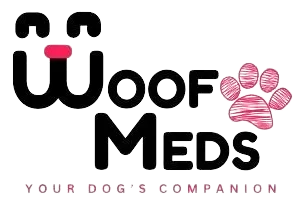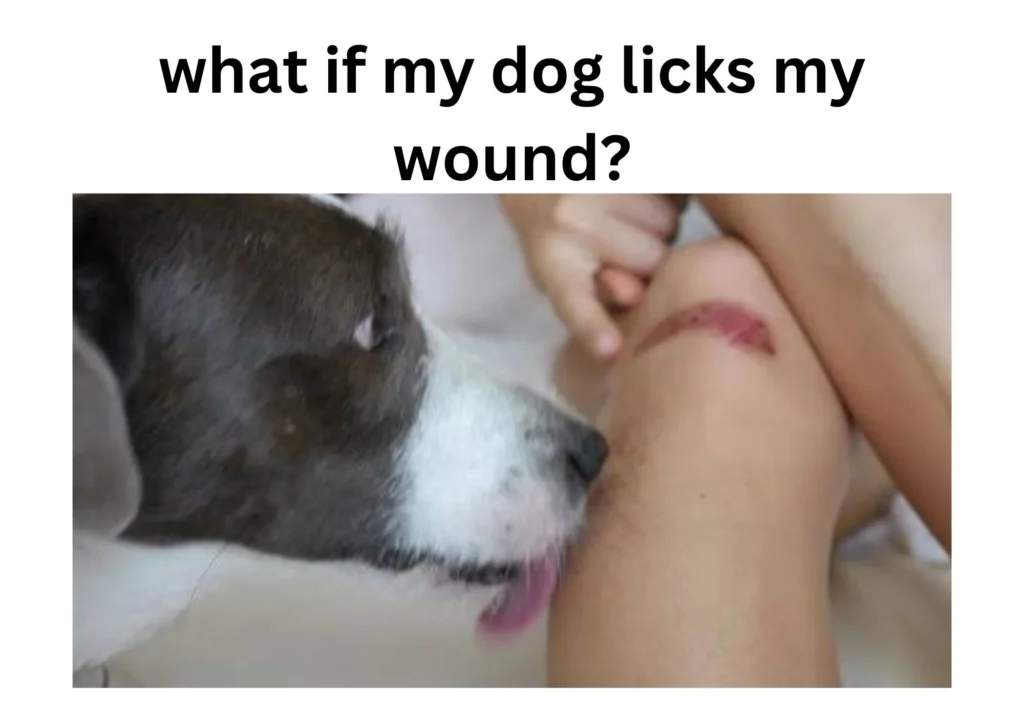The bond between humans and their canine companions is often characterized by love, loyalty, and mutual care. It’s not uncommon for a dog to show concern for its owner by attempting to lick a wound. While this gesture may seem affectionate and well-intentioned, it raises important questions about the potential consequences for human health.
What if your dog licks your wound? This seemingly simple scenario prompts a deeper exploration into the risks, misconceptions, and best practices surrounding wound care in the presence of our furry friends. In this article, we’ll delve into the complexities of this common scenario, shedding light on the realities, precautions, and considerations for pet owners facing this situation.
Understanding the Instinct of the dogs to lick wound
The instinct of dogs to lick wounds is deeply rooted in their evolutionary history and natural behavior. Dating back to their wild ancestors, dogs have displayed an innate tendency to attend to their own injuries by licking them. This instinct serves several purposes, all of which contribute to the animal’s survival and well-being.
- Cleaning and Hygiene: In the wild, where access to medical care is non-existent, dogs rely on their saliva as a means of cleaning wounds. Licking helps remove dirt, debris, and dead tissue from the injured area, promoting cleanliness and reducing the risk of infection. This behavior reflects a primal understanding of the importance of maintaining hygiene to prevent further complications.
- Promoting Healing: Dog saliva contains enzymes and proteins that possess mild antibacterial properties and may aid in the healing process. Histatins, for example, are proteins found in saliva that can help prevent bacterial growth and promote tissue repair. Additionally, the mechanical action of licking can stimulate blood flow to the wound, which may accelerate the healing process by delivering essential nutrients and oxygen to the injured tissues.
- Alleviating Pain and Discomfort: Licking has been observed to have a soothing effect on dogs, akin to self-soothing behaviors seen in humans. The act of licking releases endorphins, which are natural pain-relieving hormones, providing the dog with a sense of comfort and relief from discomfort associated with the injury.
- Bonding and Social Interaction: Beyond its practical benefits, licking wounds also serves as a form of social bonding between dogs and their pack members. In a domestic setting, dogs may extend this behavior to their human companions as a means of expressing empathy, affection, and a desire to provide care and comfort.
What are the Potential Risks?
Allowing your dog to lick your wounds may seem harmless or even beneficial, but it poses several potential risks to your health. These risks include:
- Introduction of Bacteria: Dog saliva contains a diverse range of bacteria, some of which can be harmful to humans. When a dog licks a wound, it introduces these bacteria into the injured area, increasing the risk of infection. Common bacteria found in dog saliva include Pasteurella, Staphylococcus, and Streptococcus, which can cause skin infections, abscesses, or even systemic infections if they enter the bloodstream.
- Delayed Healing: Excessive licking of wounds by dogs can disrupt the natural healing process. Persistent licking can irritate the skin, remove newly formed tissue, and delay wound closure. Additionally, the enzymes present in dog saliva may interfere with the healing process by breaking down proteins necessary for tissue repair.
- Risk of Zoonotic Infections: Zoonotic infections are those that can be transmitted from animals to humans. Allowing your dog to lick your wounds increases the risk of contracting such infections. In addition to bacterial infections, dogs can also transmit other pathogens, such as fungi or parasites, through their saliva, leading to various health issues.
- Complications from Foreign Objects: Dogs may inadvertently introduce foreign objects, such as dirt, debris, or hair, into the wound while licking. These foreign materials can exacerbate inflammation, hinder healing, and increase the risk of infection.
- Worsening Existing Conditions: If you have pre-existing skin conditions, such as eczema or dermatitis, allowing your dog to lick your wounds can exacerbate these conditions. Dog saliva may contain allergens or irritants that can trigger allergic reactions or worsen existing skin problems.
- Behavioral Issues: Allowing your dog to lick your wounds can reinforce undesirable behaviors, such as excessive licking or attention-seeking. Over time, this behavior may become compulsive or problematic, leading to skin lesions, hair loss, or further injury.
what should you do if your dog licks your wound?
If your dog licks your wound and you’re concerned about the risk of rabies, here’s what you should do, along with the general wound care steps:
- Clean the Wound: Immediately wash the wound thoroughly with soap and water for at least 15 minutes. This helps to reduce the risk of infection and removes saliva from the wound.
- Apply Antiseptic: After cleaning the wound, apply an antiseptic solution or ointment to help prevent infection. This can be an over-the-counter antiseptic or one recommended by your healthcare provider.
- Cover the Wound: Protect the wound by covering it with a clean and sterile bandage or dressing. Ensure the bandage is applied securely but not too tight to allow proper airflow.
- Consult with a Healthcare Professional: If you haven’t had a rabies vaccination or if your dog’s rabies vaccination status is unknown, it’s crucial to seek medical advice immediately. Contact your healthcare provider or go to the nearest emergency room for evaluation.
- Discuss Rabies Vaccination: Inform the healthcare provider about the incident, including your dog licking the wound. They will assess the risk of rabies exposure based on factors such as your dog’s vaccination status, health history, and the severity of the wound.
- Receive Rabies Vaccination: Depending on the assessment, your healthcare provider may recommend receiving a rabies vaccination as a precautionary measure. The vaccination consists of a series of shots given over several weeks to prevent rabies infection.
- Monitor for Symptoms: After receiving the rabies vaccination, monitor the wound for any signs of infection or complications. Also, watch for any unusual symptoms that could indicate rabies infection, such as fever, headache, weakness, or neurological changes.
- Follow-up Care: Follow any additional instructions provided by your healthcare provider, such as wound care guidelines or follow-up appointments. Attend all scheduled appointments for the rabies vaccination series to ensure full protection.
How to prevent your dog from licking your wound?
If your dog licks your wound and you’re concerned about the risk of rabies, here’s what you should do, along with the general wound care steps:
- Clean the Wound: Immediately wash the wound thoroughly with soap and water for at least 15 minutes. This helps to reduce the risk of infection and removes saliva from the wound.
- Apply Antiseptic: After cleaning the wound, apply an antiseptic solution or ointment to help prevent infection. This can be an over-the-counter antiseptic or one recommended by your healthcare provider.
- Cover the Wound: Protect the wound by covering it with a clean and sterile bandage or dressing. Ensure the bandage is applied securely but not too tight to allow proper airflow.
- Consult with a Healthcare Professional: If you haven’t had a rabies vaccination or if your dog’s rabies vaccination status is unknown, it’s crucial to seek medical advice immediately. Contact your healthcare provider or go to the nearest emergency room for evaluation.
- Discuss Rabies Vaccination: Inform the healthcare provider about the incident, including your dog licking the wound. They will assess the risk of rabies exposure based on factors such as your dog’s vaccination status, health history, and the severity of the wound.
- Receive Rabies Vaccination: Depending on the assessment, your healthcare provider may recommend receiving a rabies vaccination as a precautionary measure. The vaccination consists of a series of shots given over several weeks to prevent rabies infection.
- Monitor for Symptoms: After receiving the rabies vaccination, monitor the wound for any signs of infection or complications. Also, watch for any unusual symptoms that could indicate rabies infection, such as fever, headache, weakness, or neurological changes.
- Follow-up Care: Follow any additional instructions provided by your healthcare provider, such as wound care guidelines or follow-up appointments. Attend all scheduled appointments for the rabies vaccination series to ensure full protection.
Conclusion
In conclusion, if your dog licks your wound, it’s essential to take immediate action to minimize the risk of infection and address any concerns about rabies exposure. Start by thoroughly cleaning the wound with soap and water and applying antiseptic to prevent infection. Cover the wound with a sterile bandage and seek medical advice promptly, especially if you haven’t had a rabies vaccination or if your dog’s vaccination status is unknown.
During your medical evaluation, discuss the incident with your healthcare provider and follow their recommendations regarding rabies vaccination. It’s crucial to receive the rabies vaccination series as a precautionary measure to prevent rabies infection.
After receiving medical care, monitor the wound for any signs of infection or complications and attend all scheduled follow-up appointments for the rabies vaccination series. By taking proactive steps and seeking timely medical attention, you can ensure proper wound care and protect yourself from potential health risks associated with dog licking wounds.
Remember to continue practicing good hygiene and wound care techniques to promote healing and reduce the risk of infection in the future. Additionally, consider implementing preventive measures to prevent your dog from licking wounds in the first place, such as using an Elizabethan collar or training techniques to deter licking behavior.
Overall, being proactive and informed about wound care and rabies prevention is essential for maintaining your health and well-being after an incident involving your dog licking a wound.




Pingback: Why does My Dog Lick Me so much? - WoofMeds